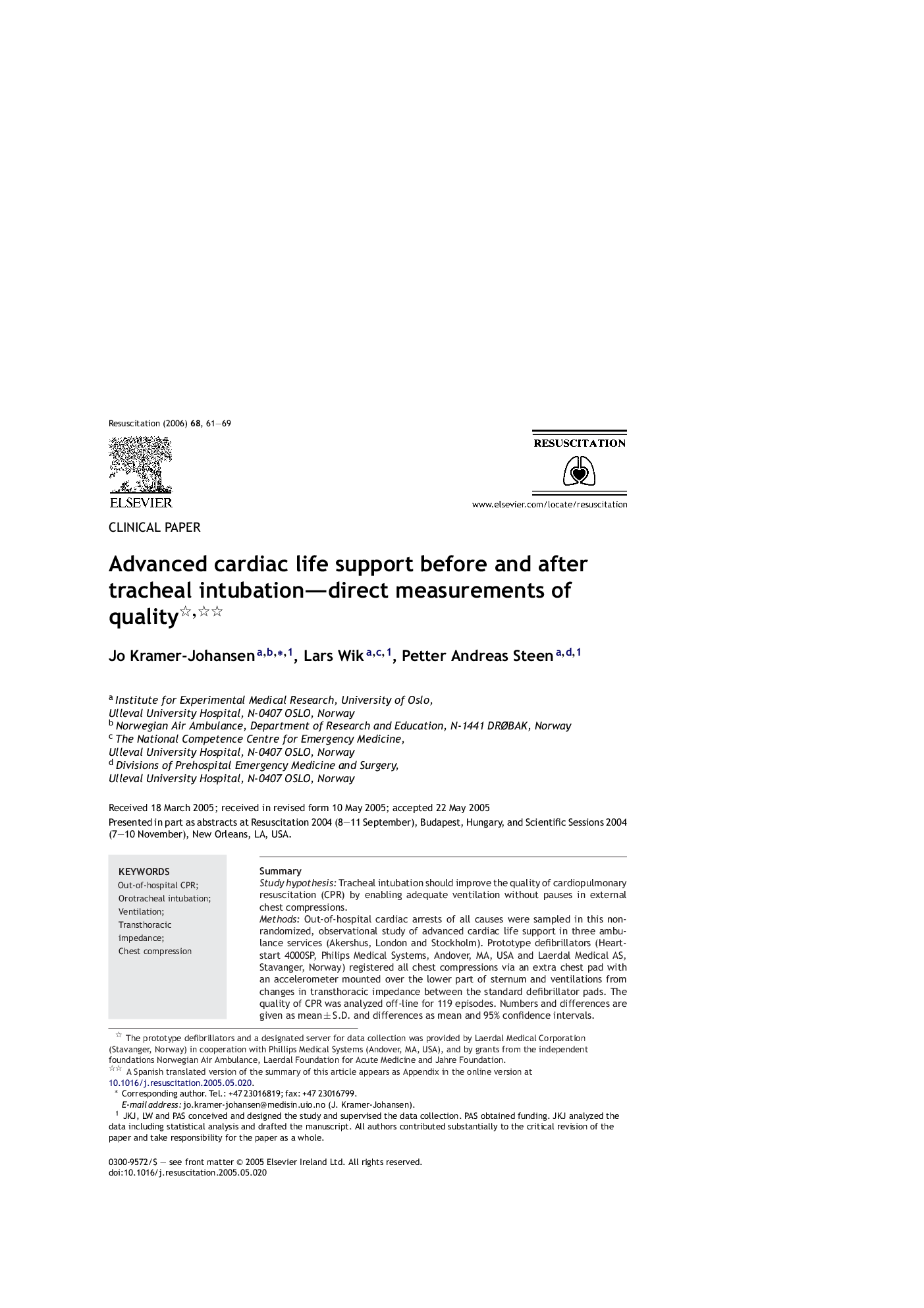| Article ID | Journal | Published Year | Pages | File Type |
|---|---|---|---|---|
| 3011589 | Resuscitation | 2006 | 9 Pages |
SummaryStudy hypothesisTracheal intubation should improve the quality of cardiopulmonary resuscitation (CPR) by enabling adequate ventilation without pauses in external chest compressions.MethodsOut-of-hospital cardiac arrests of all causes were sampled in this non-randomized, observational study of advanced cardiac life support in three ambulance services (Akershus, London and Stockholm). Prototype defibrillators (Heartstart 4000SP, Philips Medical Systems, Andover, MA, USA and Laerdal Medical AS, Stavanger, Norway) registered all chest compressions via an extra chest pad with an accelerometer mounted over the lower part of sternum and ventilations from changes in transthoracic impedance between the standard defibrillator pads. The quality of CPR was analyzed off-line for 119 episodes. Numbers and differences are given as mean ± S.D. and differences as mean and 95% confidence intervals.ResultsChest compressions were not given in cardiac arrest for 61 ± 20% of the time before intubation compared to 41 ± 18% after intubation (difference: 20% (16–24%)). Compressions and ventilations per minute increased from 47 ± 25 to 71 ± 23 (difference: 24 (19, 29)) and 5.6 ± 3.7 to 14 ± 5.0 (difference: 8.7 (7.6, 9.8)) respectively. Four cases of unrecognized oesophageal intubation (3%) were suspected from the disappearance of ventilation induced changes in thoracic impedance after intubation.ConclusionThe quality of CPR improved after tracheal intubation, but the fraction of time without blood flow was still high and not according to international guidelines. On-line analysis of thoracic impedance might be a practicable aid to avoid unrecognized oesophageal intubation, but this area needs further research.
